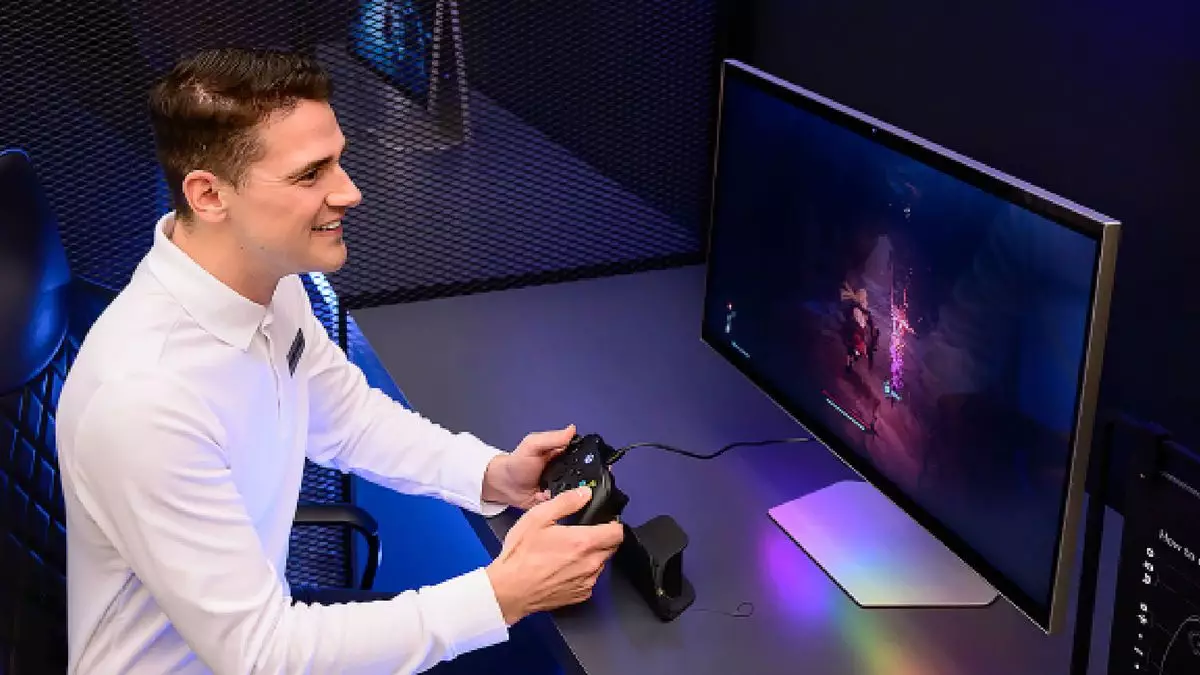In the early 2000s, the world of cinema was abuzz with excitement as audiences embraced the trend of 3D movies. With iconic actors like Michael Caine donning oversized glasses at viewing parties, the anticipation was palpable. However, the promise of 3D cinema never fully realized expectations, falling short like a film that failed at the box office. While a handful of cinematic experiences utilized the technology effectively, the novelty quickly waned, leaving many skeptics. Fast forward to today, and the focus has shifted from the silver screen to the gaming industry, where a more promising innovation is on the horizon: glasses-free 3D gaming.
Samsung, a heavyweight in the tech industry, has recently unveiled a groundbreaking partnership with Nexon Korea and Neople, aiming to revolutionize 3D gaming. Their upcoming title, *The First Berserker: Khazan*, promises to deliver “unparalleled 3D experiences” without the need for cumbersome 3D glasses. This initiative is not just a gimmick but a serious exploration of technology that could redefine how we interact with games. By leveraging the forthcoming Samsung Odyssey 3D monitor, the team aims to enhance the immersive quality of gameplay by creating depth and dimensionality that was previously constrained to theatrical releases.
In essence, the partnership intends to finely calibrate the 3D viewing experience. The developers are focusing on real-time adjustments that dictate when and how objects will appear in three-dimensional space. This methodological approach not only minimizes visual mistakes—like crosstalk—but also amplifies the impact of critical narrative moments, intense boss battles, and cinematic sequences. It’s an ambitious project that aims to merge storytelling and technology in ways that could captivate audiences and players alike.
The technological backbone of this venture, the Samsung Odyssey 3D monitor, made its initial appearance at CES 2024. But what lies beneath its sleek exterior? This innovative display employs an array of advanced tools, including a front-mounted lenticular lens, stereo cameras, and sophisticated eye-tracking algorithms. Collectively, these features enable the monitor to portray a 3D effect by projecting light at various angles to create an illusion of depth. This light field display technology could mark a turning point in displaying visual content.
However, despite its promise, the Odyssey monitor has yet to achieve its full potential. Currently, it can convert 2D content to 3D, albeit limited to full-screen videos viewed within a web browser context. As Samsung and its collaborators forge ahead, developing custom content tailored for this platform could bolster its library and enhance the gaming experience. They are engaged in a lengthy journey to catch up with competitors like Acer, which has developed sophisticated offerings in the glasses-free 3D space through its partnership with SpatialLabs.
Despite the excitement surrounding these advancements, cautious optimism remains the prevailing sentiment. The world has seen numerous failures in the realm of 3D technology, often regarded as fleeting fads that failed to live up to their hype. While VR headsets continue to gain traction, the question remains: can traditional monitors also become the next frontier of gaming? As players eagerly await the arrival of *The First Berserker: Khazan*, one can’t help but wonder if the dream of refining 3D gaming without glasses is realistic.
It’s a tantalizing proposition—immersive gaming experiences that captivate and engage without the necessity for bulky eyewear. Should Samsung succeed in delivering a standout visual experience, it could indeed pave the way for future innovations in the gaming sector. The enthusiasm and curiosity from gamers and tech enthusiasts alike indicate a collective yearning for this evolution in how we experience interactive entertainment.
As we delve into this burgeoning field of glasses-free 3D gaming, it’s essential to approach the excitement with a measured perspective. While it may feel like another revolution is underway, the fears of fleeting trends that have beset the technology industry loom large. Nevertheless, the prospect of enhanced gaming experiences without physical obstructions could be too significant to dismiss. As discussions continue and developments unfold, one can only hope that this venture will herald a new dawn in immersive gaming. Let’s maintain our fingers crossed, not just for the technology’s success but for the possibility that one day, 3D gaming can finally find its place in the spotlight.


Leave a Reply